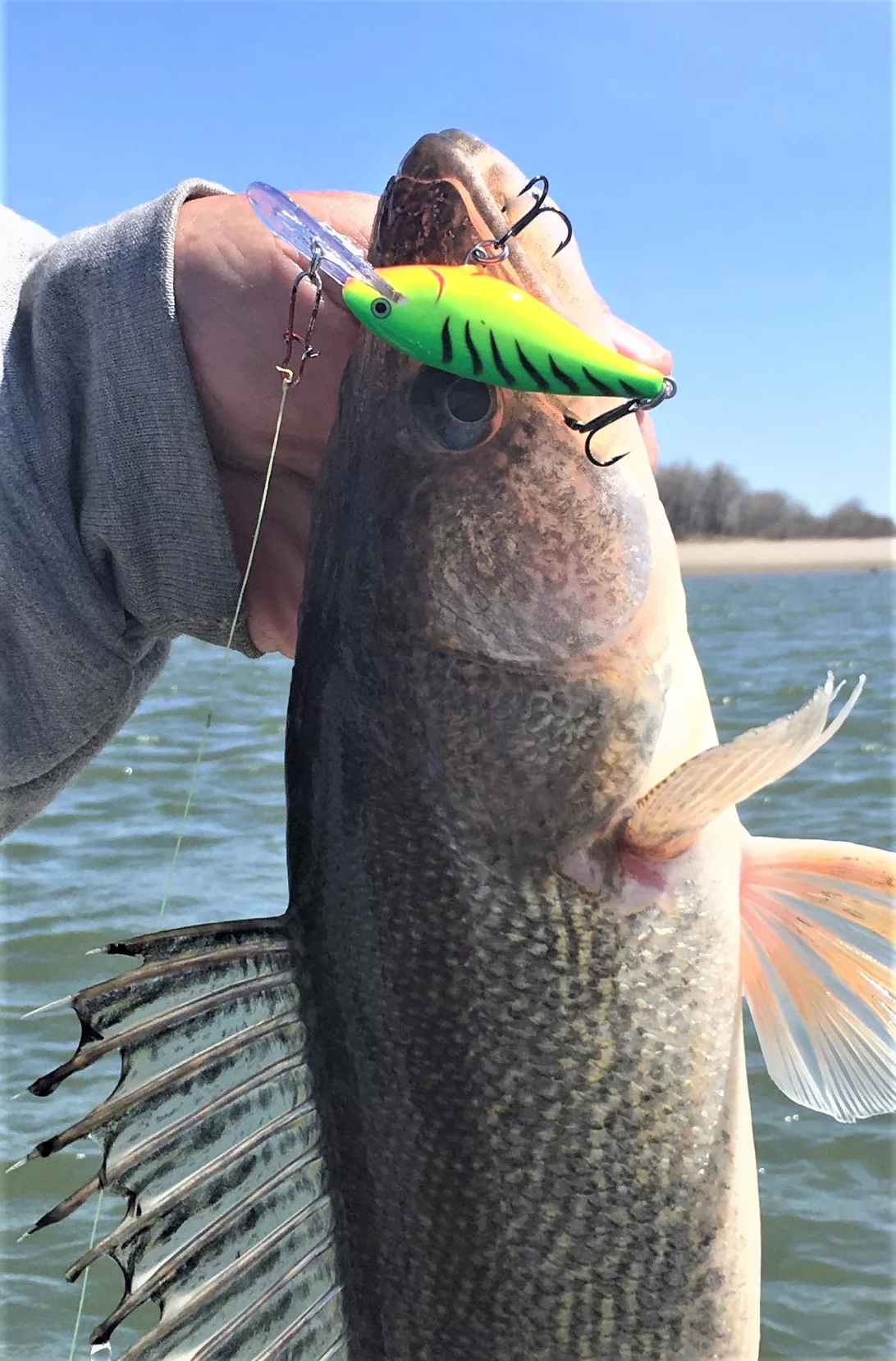
In the dingy flows of the Missouri River, brighter crankbaits can pay off when angling for walleyes in spring. Simonson Photo.
By Nick Simonson
Springtime brings with it some interesting water conditions. In years such as this one, where limited snow and low runoff are the norm, many streams and lakes can be super clear. In springs like 2023, where a seemingly endless supply of snow provided a rush of meltwater for a long period of time in the season, waters on many flows were dingy. Large spring rain events, and even supercell thunderstorms can change a river or lake from crystal clear to murky and brown overnight. Knowing the factors that influence turbidity – that is the clarity of water, or more accurately, lack thereof – can help increase your odds when fishing for those predator species such as walleyes, bass, pike and crappies, which are sight sensitive in their hunting tactics.
Clarity Components
There are many factors that lead to clear water. Obviously, times of low runoff and drought don’t pump a lot of washed down soil, debris and detritus into a flow, making waters clearer. Similarly, withholdings from reservoirs as they fill to pool can reduce flows, letting water settle and clear when there isn’t as much current on a river. Further, invasive species such as zebra mussels can quickly change the clarity of a lake over several seasons, and spring-fed lakes are generally clearer, utilizing filtered aquafer water from the ground, instead of runoff to keep things level.
On the flip side of the coin, continuous runoff from spring melt, deluges that wash down from just-tilled soils or in those areas where livestock are present along a lake or stream, and even strong algae blooms in late summer can quickly turn clear water to mud, changing the fishing tactics necessary to succeed. Whether it’s the dirt of a flash flood event washed into a water, or the blue-green cloud created by a stretch of hot summer weather, conditions related to clarity can change in a hurry as well.
Match & Catch
In those super clear waters, it’s important to offer up natural lures that mimic local prey species. Thus, natural patterns such as perch, green or brown crawfish, or silver and gold minnows are a logical choice as fish can see the patterns more clearly and are more likely to take to the style of lure that more accurately matches their standard prey. Do a quick survey of those clear water lakes to find out what the forage base is and go in armed with the right baits to get the job done.
In those dingy, dark, and turbid waters, brighter patterns may stand out better, even for those fish with keen eyes such as walleyes and pike. Thus, instead of throwing a natural patterned perch crankbait, consider opting for a firetiger paint scheme instead. The bait still generally matches the prey species with highlights of green, orange, and yellow, but it stands out against the tinged water and gives fish a bit more of a target to cue in on and react to.
Adjust Presentations
A final consideration when fishing clearer water is the type of line being employed and the size of lure being used. In clear waters, fluorocarbon leaders and line provide a less-detectable option when connected to a crankbait or jig. When using the latter offering, consider going smaller as well, especially if fish are fussy after a cold front in spring. The less there is to see, the less fish have to turn their nose up at; use the lightest jig possible to maintain contact with bottom and accurately present a bait.
In more turbid flows, anglers can get away with using superlines like Fireline or PowerPro, as the braided line isn’t as evident with the concealment in the darker water. Bigger baits may need to be employed as well to get the attention of fish, so going from a size 5 Rapala Shad Rap to a size 7 or 9 may be in order to put a bigger target out there.
As has been observed so far this spring, and in many seasons in the past, water conditions can change on a dime based on inflows, rain events, snow melt and other factors. Keep clarity in mind as you hit your favorite lake or river after ice off and adjust your presentation accordingly with these tips and those you pick up each day on the water.
